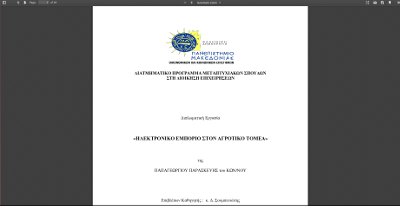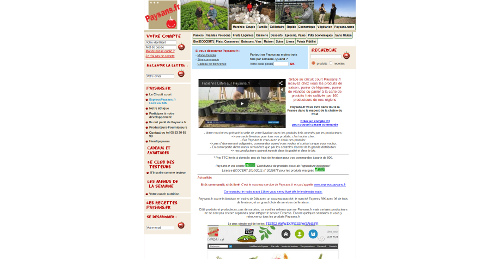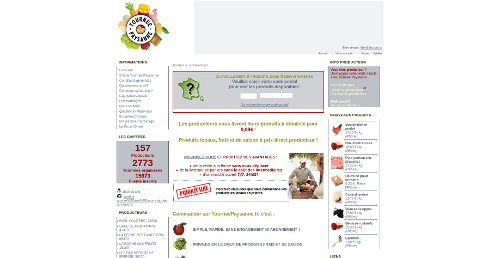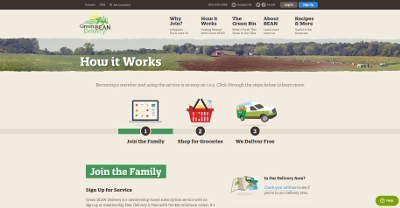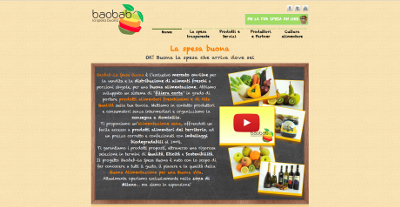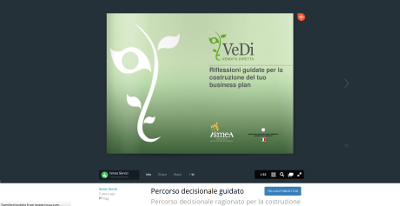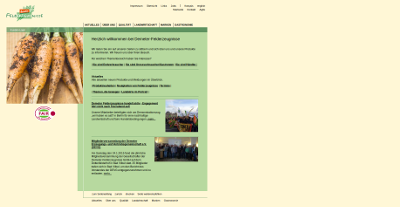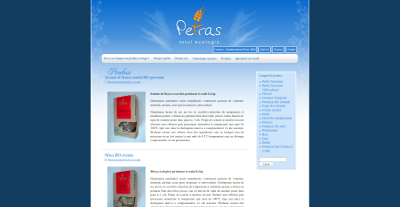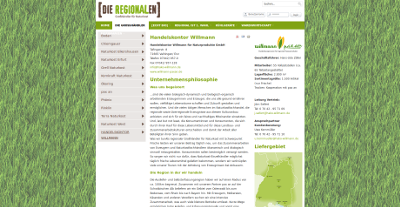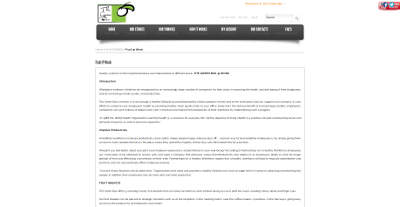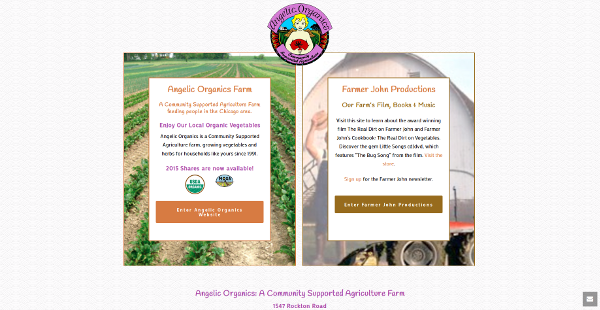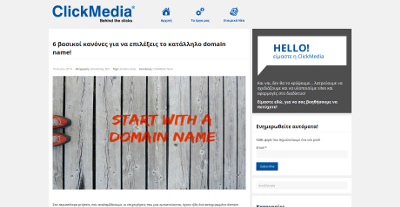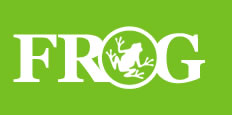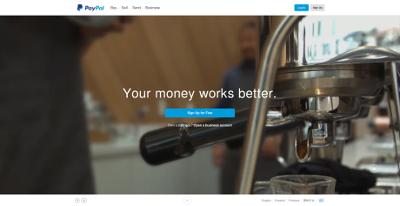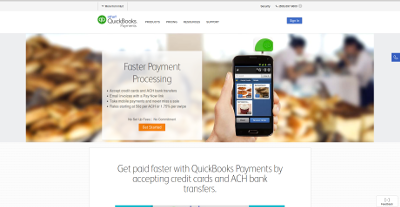Εισαγωγή
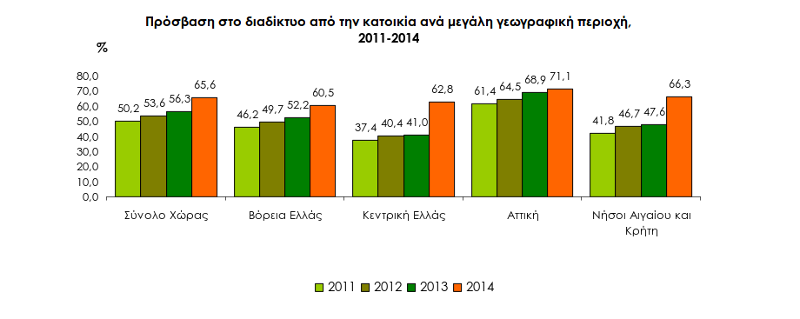
Ένα αυξανόμενο μερίδιο αγοράς: πόσοι χρήστες του Ιντερνετ υπάρχουν;


The first P: Product
Concept and product testing
- Then each concept has been tested by asking consumers “Would you be interested in this kind of product that would give you this benefit?”. Large companies use methods like focus groups, quantitative researches, CAWI, and so on, but if your company is small, you can also reach your objective by just asking a selected group of clients.
- Once the concept test gives a positive result, the product is actually designed. Design involves recipe, size of portions, the materials for the packaging, which ensure the best performance from the transportation and storage point of view, and an efficient storage on retailers’ shelves. Once the packaging has been decided, with care over the colors in the design (different colors can convey very different messages: elegance, safety, happiness, etc.), of its visual impact, and of the way (with which combination of images and words), the key pluses (or, better, the unique selling points) are told. Each aspect can - and should better – be tested, because success can often come from details. Organoleptic aspects must be at their possible top, size, colors, and messages (language, tone) must absolutely be consistent with the characteristics of the selected target. If you are addressing single people, packaging sizes will be much smaller than when you address families (and if you address both, your product line will have to include both large and small packaging: each retailer will choose, according to his needs (you can check this by visiting two stores of the same chain, one in a place mostly inhabited by students, and one in a place mostly inhabited by families). A very important element of product design are: product name, and its brand. For example, “10+” has an extra guarantee because it is made by “Amadori”, a famous and well reputed brand in Italy.
Total consistency: price, distribution channel, communication
Consistency is very important, and it extends to the price (if it is too low, consumer will fear poor quality, if it is too high, consumers will think they cannot afford it), and to the place where it is sold (the same product may have a different image when sold in a discount store, in an average quality supermarket or in a delicatessen shop).
Expressed and latent needs
Not all needs are expressed, and we are not aware of all our needs when we go to a supermarket. Getting back to our examples, we might not be thinking “I want a Parmigiano - Reggiano cream for my childrens’ snack, but if we see such cream on the shelf, it realise that we often find it difficult to find a good, healthy snack for our children. The same goes with “10+” meat. Perhaps, when we see it on the refrigerated shelf, we were not explicitly looking for turkey meat with all those advantages, but nevertheless we feel that our unexpressed need to “do something good” for ourselves and the environment has been satisfied.
Things may seem a bit different with “Piadenelle” (people with intolerances are looking for special products). But this product offers many pluses, and perhaps consumers had not all of them in mind at the moment they bought the product.
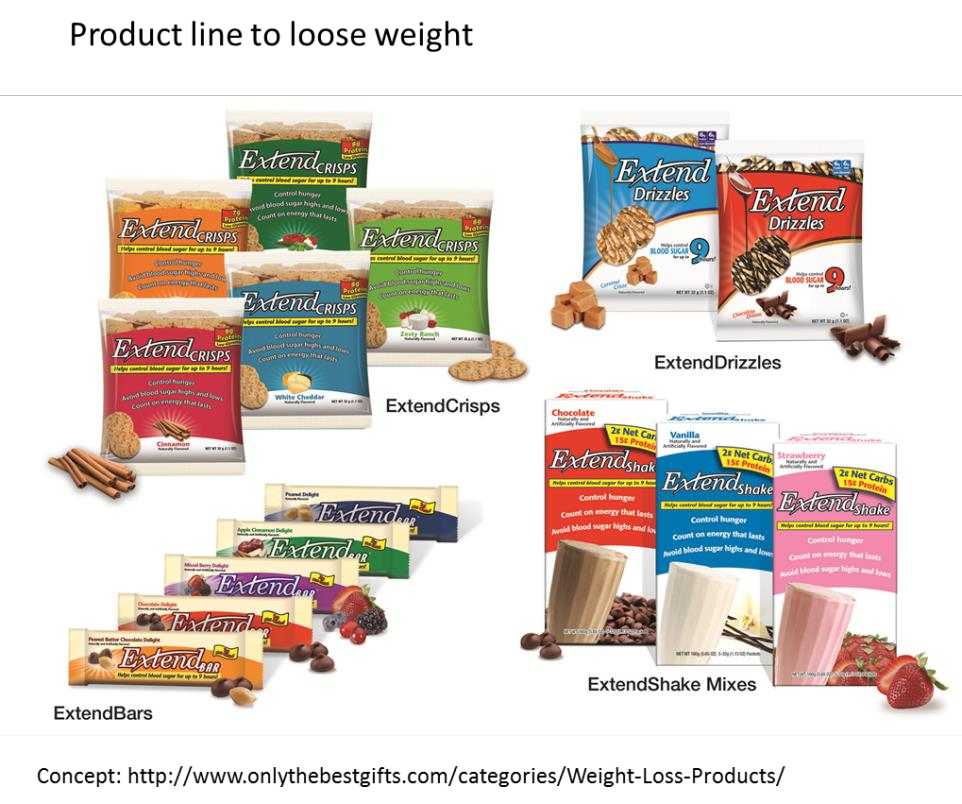
A very common error that is made when designing a packaging is to ignore our competitors’ packaging.
If all fruit juice bottles are orange or yellow, we have different options: we can do the same, because we think that this means that orange is a color that “sells”, or we may choose a different color, to be noticed on a shelf. The same applies to the color of our stall in the market, or of the signpost on our shop. .. So what should we do? It can help to design 2-3 options (what is called “rendering”) and showing them to a sample of current or potential clients: what do they prefer?
Exercise 1
Analyse the packaging of the three sample products: do you think they best communicate the product’s messages? How can they be improved?
| Product | Possible packaging improvements (or is it perfect as it is? if so, why?) |
| Piadenelle | |
| 10+ | |
| Parmareggio product line |
Exercise 2
Analyse these products. Are there excellent ideas relating to packaging? Are there elements that you would improve? Express your opinion. And what about the product concept? Do you think it is a generic product or does it convey a special benefit? If so, which one? What about the name of the product?
| Product | Possible packaging improvements (or is it perfect as it is? if so, why?) | Product concept? Which target? Is it well conveyed? |
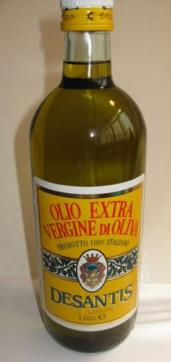 |
||
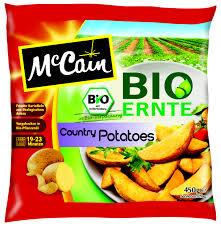 |
||
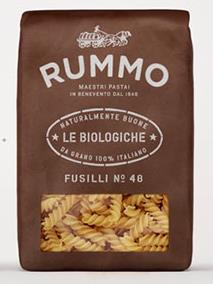 |
||
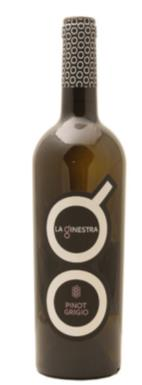 |
||
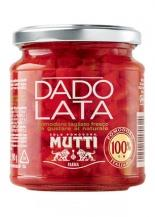 |
||
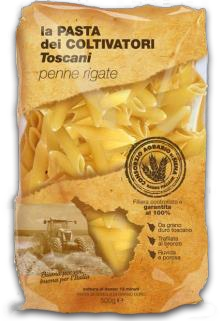 |
||
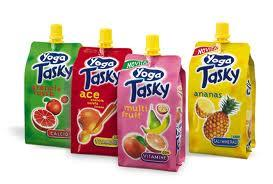 |
||
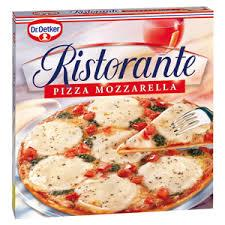 |
||
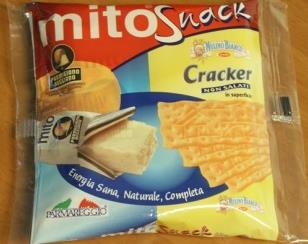 |
||
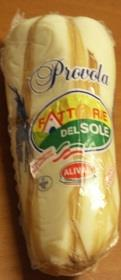 |
Case Study
http://www.oscargreen.it/dotnetnuke/it-it/socagralghitaly.aspx
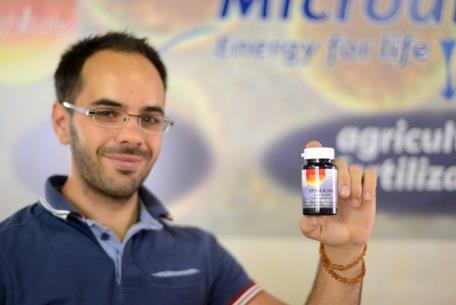
PRODUCING HEALTHY SEAPLANTS
Τί να σκεφτείτε κατά τη δημιουργία της ιστοσελίδας σας
Υπάρχουν τουλάχιστον τρία χαρακτηριστικά που πρέπει να διαθέτετε:
- μεταφορά των προϊόντων
- διάρκεια ζωής του προϊόντος
- εγγύτητα σε μεγάλα κέντρα
Κύρια σημεία που πρέπει να αναλύσετε πριν δημιουργήσετε την ιστοσελίδα σας:
- Το σκοπό της ιστοσελίδας σας
- Το χρόνο και την προσπάθεια απο απαιτεί η ιστοσελίδα σας
- Με ποιον τρόπο μπορείτε να ξεχωρίσετε από τους ανταγωνιστές
- Πως μπορείτε να δημιουργήσετε ενδιαφέρον περιεχόμενο
- Την πρόθεση σας να διατηρείτε την ιστοδελίδα σας διαρκώς ενημερωμένη για να έχετε επαναλαμβανόμενες επισκέψεις
- Τους καλύτερους τρόπους για να είστε στο πλευρό των επισκεπτών σας
Είναι ευαίσθητη η θερμοκρασία του προϊόντος;
Μπορεί το προϊόν να συσκευαστεί με τρόπο που να αποστέλλεται εύκολα και με ασφάλεια; Αν όχι, το κόστος μπορεί να είναι απαγορευτικό
Είναι η παρουσίαση ή η ποικιλία ή το προϊόν μοναδικό με κάποιο τρόπο;
Τι διάρκεια ζωής έχει το προϊόν;
Ο σκοπός της ιστοσελίδας
How will your product reach your clients?

Κρατήστε στο νου σας
A distribution network consists of two parts:
- a set of locations that store, ship or receive materials (such as factories, warehouses, retail outlets);
- a set of routes (land, sea, air, satellite, cable, Internet) that connect these locations.
The term “Placement” has to do with what we usually call “distribution channels”: how will your product reach your clients? How many ways can you imagine?
Someone will buy directly from you. If they are consumers (families), this is called business- to- consumer relationship (B2c), and is quite different from the “business- to – business” (B2B) one (which may involve wholesalers, retailers, but also – do not forget – the important Hotel Restaurants Catering (Ho. Re. Ca.) channel. Everything is different: what you say, how you say it, transport means, prices, and even products, their packaging, their size. Moreover, when you sell to consumers, they usually pay cash, when you sell to other businesses, you issue an invoice which can be paid in 30-60 days according to the law and to specific agreements.
Even costs are different. It is, in fact, different to keep one relation with a client - to make big shippings to a big retailer - or to prepare many different parcels for small clients. Moreover, large clients buy large volumes and ask for large discounts. Smaller clients have a lower bargaining power and may accept higher prices. With large clients, you can build your turnover rather quickly, but you can also diminish it quickly if one of them leaves you. With small clients, it is not a big problem if there is a turnover.
Some clients will not buy directly from you. It means that there is someone “in the middle” who buys and re-sells your product. But, if you have a brand and a good communication strategy, also end users will have a chance to get to know you and become loyal towards you, thanks to the pleasant comsuming experience they regularly have with your products. And if they know you, and like your products and the way you introduce yourself (on the packaging, but also in communication), they will “force” their provider to keep you in his catalogue ... this is called a “pull” phenomenon: it is not sellers who “push” a product, but buyers who “pull” to have it. Not bad, isn’t it?
It is, therefore, important to introduce a little “strategic thinking” also in the choice of your “placement” channels. Of course, you have to accept the clients that come spontaneously, but, as far as new business is involved, you can try and “diversify” your client portfolio.
To find the right place for marketing is part of the so called Operational Marketing Objectives. The marketing instruments have to be adjusted and adapted to the operational marketing objectives.
Κρατήστε στο νου σας
The Objectives have to change periodically as the market is permanently changing.
Distribution Channels: A Definition
A set of interdependent organizations involved in the transfer of products from the producer to the consumer.
Functions
The most important function of a distribution channel is to provide a link between production and consumption.
There are several important key functions that must be undertaken in a market:
- INFORMATION: market research
- PROMOTION: offers must be promoted
- CONTACT: communication with prospective buyers
- MATCHING: offer must fit buyer's needs (taste, granding, assembling, packaging)
- NEGOTIATING: adjusting the price
- PHYSICAL DISTRIBUTION: transporting and storing goods
- FINANCING: the funds must cover the costs of the distribution channel
- RISK TAKING: the commercial risks must be assumed by the operating channel
Read more
Main distribution channels
Promotion
Overview
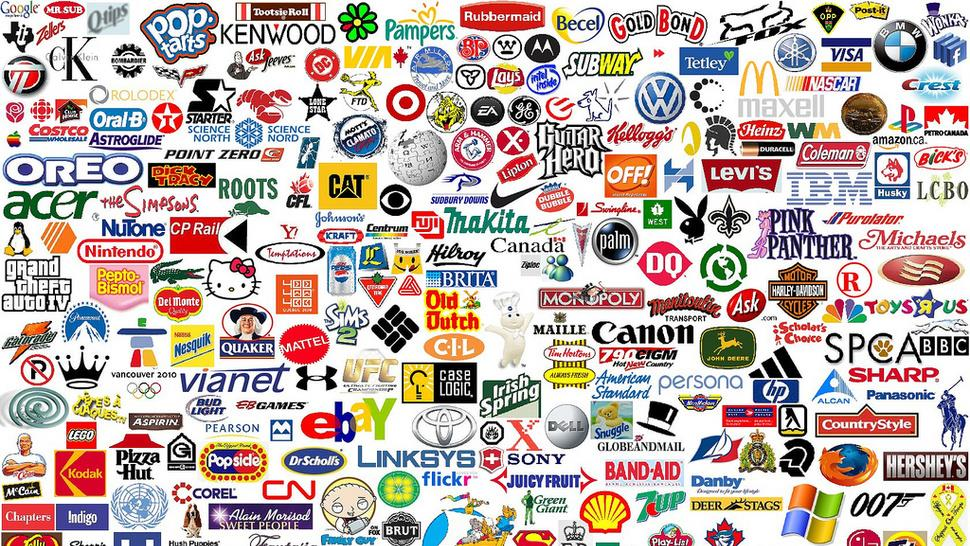
WHO?
WHAT?
HOW?
It has happened to all of us - at work or in the family - to have done something good, but nobody seems to notice, or they just take it for granted. Sometimes we have to make ourselves appreciated by underlining our merits. In the market the situation is similar.
Think of two bottles of extra-virgin olive oil. The first one is top quality and organic, the other one is a low quality, normal oil. And now think of the efforts that the first farmer has made, to get such an oil, while the other farmer was just “working as usual”. The first farmer has made sure to look after his crop and prune it well, has fought parasites and plant diseases with alternative, perhaps more expensive, products. Harvesting has been made in a quick, professional way. Olives have been stored in ventilated containers and processed within a few hours. The other farmer may have harvested olives when he had time, stored them in sacks and processed them in a few days. To consumers who know nothing about olive oil production, of the taste of good olive oil, all this means nothing. If the worst oil is put in a good – looking bottle and sold at a low price, it may even win the competitive battle. And these kind of consumers are numerous, especially in the countries where olive oil is not the main source of fats.
So, the first aspect of promotion concerns letting people know about the efforts, the know-how which is contained in your work.
“Quality” is a generic word, too many people use it. You have to specify which kind of “quality” characterizes your product (see also “Unique Selling Point”). But this is not enough. What are you going to say? It depends on your “target”, which means the category of consumers you want to speak to. The same sentence, with the same words, can have very different effects on educated or on poorly educated persons. An elegant sentence may seem pleasant to the first, too distant to the latter. And what mood will you use? Funny, happy, serious?
Moreover, how will the message reach your target audience? In a world full of messages of any kind, how will it get their attention? Think of a bottle of milk. If there is a cow on it, nobody notices, it’s obvious to find a cow on a milk pack. But what if you put a ... lion on it? Or what if the cow is violet? Consumers will pay attention to what you have to say, will associate your message to your image, and will recognize your product in the point of sale ... and even – hopefully – ask for it!
Κρατήστε στο νου σας
Promotion is an initiative undertaken to promote an increase in sales, usage or trial of product or service.
No matter what is your choice of media with which you promote your products, they count as one of your tools to enhance your sales and compete
The same words can have different effects on people. If you say “with my product you can avoid cooking”, you will earn the affection of many working women, but perhaps not of those housewives who make of cooking their profession and their source of self-esteem
It is impossible NOT to communicate. Even if you stay completely still and say nothing, you are sending a message
Promotion as a means to entice people to try a product
There are many ways to make people try your products. The promotional mix is the special blend of promotional tools that can be chosen.
Here is a list of these tools:
Sales Promotion: coupons, contests, product samples, rebates, tie-ins, self-liquidating premiums ...;
Advertising is the presentation of products in a mass medium, such as television, radio, the press, billboards, in – store material (POP), etc.
Personal selling, which involves presenting the product one-to-one
Public relations: you can transform a fact about your product into news, and then “spread” the news by means of meetings, by taking parts in TV programs, etc.
Direct Marketing: it is a communication which goes directly to customers, with methods such as mobile messaging, email, interactive websites, online display ads, fliers, catalog distribution, promotional letters, and outdoor advertising
House Organs: small magazines published under the name of the brand
Sponsorship of an event or contest or race (but also of social / charitable initiatives)
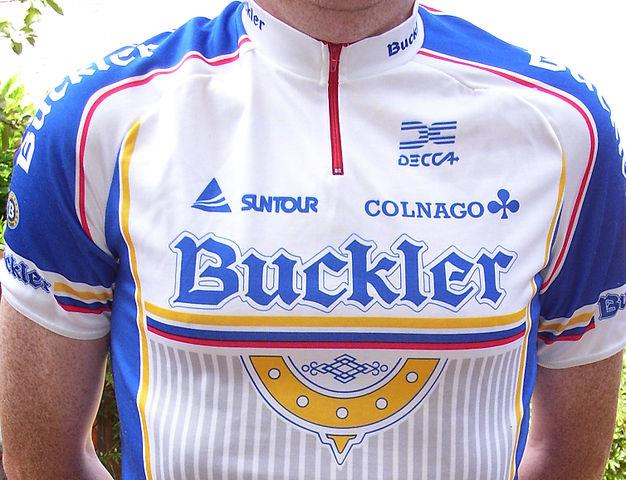

Food sponsorship in sports
Promotion from an operational point of view
The aim of promotion is to communicate, to get consumers to try your product, to understand and to remember its benefits:
analysis of the target audience, habits and needs of regular and potential customers
choosing the most suitable products for each target audience, the real guiding value and certifications, events and promotions. Consumers in the last years show interest also for: history (of the farm and products), care and passion in production, value, local products, short chain, quality, territorial promotion and collaboration with local authority, quality control and certification.
choosing the appropriate tools for the detected target audeince, the available budget, competitors’ strategies. When we speak of a seller in a shop, every element of his body language communicates something.
In oral forms of communication, the appearance of both the speaker and the surroundings is essential to the successful conveyance of a message. It is important to take care of your appearance and that of your store or stall as well.
Body language and particularly facial expressions can provide important information that may not be contained in the verbal portion of the communication (SMILE!).
Gestures can add emphasis and improve understanding when used sparingly, but the continual use of gestures can distract listeners and convey nervousness. It is also important to note that perfume or other odors contribute to a listener's impressions, as does physical contact between the speaker and the listener.
Κρατήστε στο νου σας
Consumers’ profiles have now really changed in comparison with the past
No matter what is your choice of media with which you promote your products, they count as one of your tools to enhance your sales and compete
an increasing number of consumers are looking for healthy, genuine and local food
it is important to meet consumers needs and requests to improve their satisfaction
Promotion is divided in two phases:
TIME TO THINK
- General advice
- Κρατήστε στο νου σας
- Financing
REALIZATION
- Content
- Format
- Printing
Time to think
General advice
Know the precise purpose of your document and BE SIMPLE!
Use AIDA to conceive your ad.
- Should you create your own ad or have someone else create one for you?
This is a choice that depends on economics and competence; - Why not have a professionally made advertisement? How do you balance cost and quality? You profit on one side while losing on the other; it’s unavoidable. It is unlikely to create an ad of professional quality without any graphic or technical experience.
Remember
- It is extremely difficult to create a need!
- An individual exposed to 1000 messages each day, he sees 100, he retains 10.
- The average reader passes around 5 seconds to skim a document to decide whether or not he will read it. If your titles, text and graphics are annoying or not interesting, then few people will stop to read your document.
- Do not promote things that do not exist yet!
Financing
Your document can be sponsored (by the Council General, the Chamber of Agriculture or by individuals). In these cases it is expected you to publish the sponsors’ logos. Remember this, when planning your ad’s layout!
Κρατήστε στο νου σας
Employing an advertising agency does not guarantee SUCCESS. You have to make sure that everything is mafe in the right way, according to your needs and goals
The logo: the company’s visual identity
The logo is an integral part of a business
A logo is the graphic representation of a company, a product, or a service. It symbolizes the company through its shape and its colours. It is one of the fundamental pillars of the identity of a business. It carries the colors associated with the company’s activity and it presents the company’s values.
Realization
Content
Your document should inspire confidence and incite interest in the reader.
A three-part document
- Description of the client’s search, their known need
- Solution with the presentation of the product
- Explanation on how to find the product (local market, farm’s address, website, social networks)
Reminders
- The communication is for your clients, and not for you!
- Long texts sell... when well written and interesting
Be convincing
- Use a direct tone and simple tenses (imperative and present indicative).
- Avoid the conditional and future tenses.
- Avoid the negative.
- Technical descriptions quickly tire the reader
Format
Your ad could be:
The flyer
The 3 page brochure
The advertisement postcard
Remember
- Illustrations and photos: a picture is worth 1000 words.
- What interests your clients is to know if your products respond to their needs.
- Before beginning, assemble all of the photos and illustrations that you will use.
- Do you want to create your own brochure without any computer graphics experience? Even if it’s not recommended, you can try with the Download of the Microsoft Word and Publisher models of business posters and flyers directly from Microsoft’s website.
Once your creation is complete, present your draft to an outside opinion and accept their critique.
Printing
- Work realized by a printing company
- Using your own material
- You can use cardboard
Κρατήστε στο νου σας
- Present your product by showing that it corresponds with a potential need of the reader
- Technical descriptions quickly tire the reader
- BE real positive and credible
- Do not waste time adding elements that do not serve to sell or to convince.
Advertising media
Radio, television, press, internet ...
Advertising through the media to promote farm products is costly. This method is certainly used by producer co-ops.
On a smaller scale, you can gain press time by catching the interest of a journalist who will write an article about you for the newspaper or by getting on a local radio or television.
If you decide to organize an open house event to expose your products to potential clients don’t forget to invite the local press and radio station. Immediate action you can take is to purchase ad-space in the local news journals (read by a large public). You can equally create your own website or social network page if your products can be sold long-distance (foies gras, wine, preserves, etc.).
Events
Be aware that this is a large amount of work: coming up with regulations, printing of bulletins, description of prizes, presence of an official for the drawing, etc.
Promote your event in advance through as many methods at your disposition. Check with your insurance and be informed on regulations (bills, ticket office, etc.). Notify the local town hall and give your event date to the nearby fire station and medical facility in case of emergencies. At the end of the event a summary report with number of visitors, sales figures, number of addresses collected, strong points, weak points, things not to be done in the future, ameliorations, etc. should be drawn up.
Κρατήστε στο νου σας
Remember that your shop or stall has to be:
- Nice - to attract customers
- Tidy - to allow products visibility
- Clean - to show your attention and care for healthy and hygiene
- exposed prices
Public relations
Newspaper articles are appealing because they give you exposure to a large number of people in a form both attractive and valorizing.
The principal is having something new or interesting to announce! Remember to propose an article whose subject sits within the domain of this rubric. Always leave a way to respond for more information.
Sign and leave your telephone number and e-mail address.
Placing free ads on the internet
Through banner/signs, articles, links, posters, news and announcements.
Κρατήστε στο νου σας
When you send your invitation to journalists: be informative, brief, clear.
Focus: territorial marketing
Radio, television, press, internet ...
Territorial Marketing has the purpose to increase the potential of a local system during time of Globalization
To reach the new frontiers of competitiveness and development, it’s important to go through adequate territorial politics of economic and social promotions, with the goal to increase the quality of life, attract visitors, investments and create new local jobs.
It is possible to promote local typical products by:
- relationship with local authorities
- communicating traditions
- developing a network amongst producers in the same area
Another example of territorial marketing in business consists of tourism departments and city councils with marketing teams competing to attract tourists and new residents use branding techniques. Also called place marketing or place branding.
Is there an existing market for my products or services?
Important! Social networks as a means of promotion
Nowadays, no farm is justified if it does not make use of social networks to get in touch with its clients!
A well- designed website and a Facebook page are musts, and they have to be kept updated with photos and comments, but also Twitter and Linkedin (the latter being a professional network) are very important.
www.ismeaservizi.it/flex/cm/pages/ServeBLOB.php/L/IT/IDPagina/872
Keeping relations with social networks is easy and not very expensive, but requires dedication.
It is important to attend a course on how to work with social networks, since without the right know-how many opportunities of contact might be missed.
A rather new internet promoting means are videoclips. You can design them as you want, and consumers, who seem fed-up with traditional means (many of them do not even notice banners) do look at them with interest.
www.nytimes.com/2012/02/10/business/media/chipotle-ad-promotes-sustainable-farming.html?_r=0
The interesting thing about web promotion is that you can have a feedback about how many people have seen a given page, for how long, from where, if they are “new” or “coming back”, etc. This helps you plan you communication very well, and get to know many hints about customers’ likes and dislikes.
The Unique Selling Point

Why "unique"?
Imagine that you have to promote ... yourself. Suppose that you do have all the characteristics listed in the picture above. What are you promoting yourself for? A new job? A boyfriend / girlfriend? Where can it be? In Sweden, in Spain? Whatever the situation, it would be confusing, and perhaps sound a bit boastful, if you listed all of your wonderful features. It would be much better if you chose the aspect that would mostly help you in each situation. For example, blue eyes could be useful to find a boyfriend / girlfriend in Spain, but not in Sweden (where many people have blue eyes), your physical strength would be appreciated for a physical activity, but would be insignificant for a desk job. Similarly, being creative might not be so important when you have to stamp envelopes all day, being polite is crucial if you are in a front desk, and there are people who appreciate, in a potential partner, sweetness more than wealth.
The same goes for a product or service. Consumers get confused and / or bored if you boast too many qualities, and might get to think that you actually have none of them ... it is better to think and try until you have chosen the right, “unique” on ...
How can I find my unique selling point?
- Make a detailed list of your potential targets, e.g. “young business-women”, “70-year-old singles”, “large wholesaler”, “purchasing manager of a fruit processing company” ...
- For each of them, list, according to the product you are thinking of, what problems they might need to solve, or what their desires might be. Young business-women might need to save time, 70-year-old singles might love to have a chat, purchasing manager might crave very punctual deliveries ...
- Think about the way they are solving their problem or satisfying their wishes now, and try to figure out if there are different, better ways ..
- Then write down the definition of your product and the benefit that it will bring ..
- You might have a list of options, and a good brainstorming session with your colleagues will be very useful and interesting, both to take a decision and to think things over ...
A selling point is what you say, or write, about your product and/or service to enhance its sales.
It reminds your current customers why they have made a good choice in choosing your products ...
... and tells your potential customers why they should do the same.
It states what makes your offer different from your competitors
... but ... why “unique”?
Sometimes it seems difficult to leave a few of your features untold.
You can help yourself decide by imagining a packaging in which ALL of them are written and putting yourself in the place of consumers.
How would that packaging look?
Perhaps a bit crowded?
And what would its visual effect be?
A useful exercise for step 3 is to take a look at what it is already on the market, and look at existing messages ...
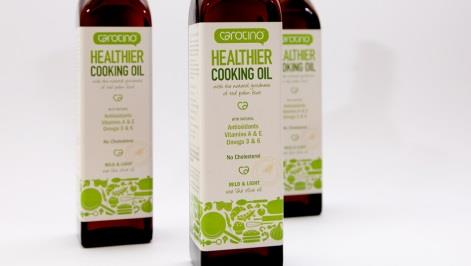
Exercise 1
Write the selling point that is associated with these products. Write a comment by answering the following questions: Who do you think they are targeted at? Do you think they express a real benefit and are really distinctive? What benefit does it give? Does it offer nothing special? What benefit, in your opinion, did producers mean to offer?
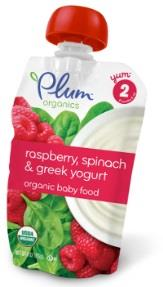 |
|
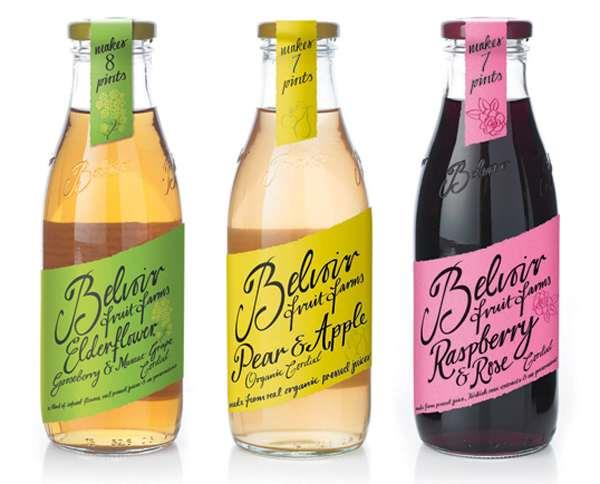 |
|
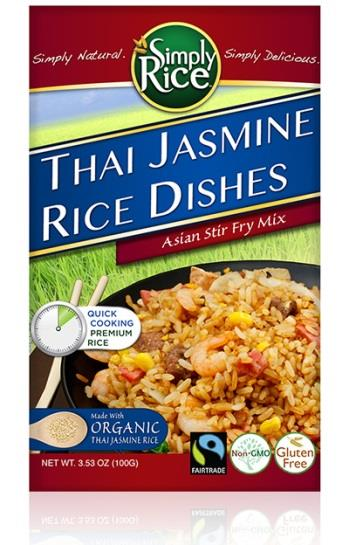 |
|
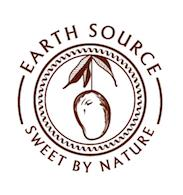 |
Exercise 2
Think of this product: extra virgin olive oil. For this product, find a particular kind of product and a selling proposition for each of these targets (for example, elderly people who are not used to extra virgin olive oil might like a light taste, etc.)
|
People who cannot eat much salt because of high blood pressure 
|
|
|
People who love to spend their holidays in Southern Italy 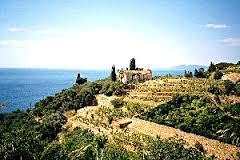
|
|
|
People following the vegan diet 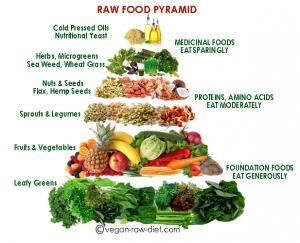
|
|
|
People with long hair 
|
Ο σκοπός της ιστοσελίδας
- Βιτρίνα για τα προϊόντα σας
- Υποστηρικτικό μέσο για την διατήρηση της σχέσης με τους πελάτες
- Εναλλακτική αγορά, ηλεκτρονικό εμπόριο

Η ιστοσελίδα εξυπηρετεί μόνο ως μέσο προβολής των προϊόντων σας ώστε οι επισκέπτες να παίρνουν μια ιδέα του τι προσφέρετε.
Το επίπεδο λεπτομέρειας στην παρουσίαση των προϊοντων και οι σχετικές πληροφορίες αποτελούν στρατηγική απόφαση του παραγωγού.
Σχέση
Η ιστοσελίδα σε αυτή την περίπτωση μπορεί να χρησιμεύει για την άμεση επικοινωνία προς τους πελάτες των νέων για τα προϊόντα ή την παράδοση τους.
Μπορεί να γίνει πολύ σημαντικό μέσο προσωπικής σχέσης με τους πελάτες σας.
Ηλεκτρονικό εμπόριο
Είναι η πιο σύνθετη μορφή ιστοσελίδας. IΣε αυτή την περίπτωση, η ιστοσελίδα αποκτά κύρια σημασία καθώς γίνεται το βασικό μέσο πώλησης. Είναι το ηλεκτρονικό κατάστημα του παραγωγού και, επομένως, πρέπει να είναι σε θέση να χειρίζεται όλες τις τυπικές λετιουργίες της ηλεκτρονικής συναλλαγής.
Μπορείτε να κάνετε στοχευμένη επένδυση των διαθέσιμων πόρων σας και οι χρήστες μπορούν εύκολα να μπουν στον «κόσμο σας». Η ιστοσελίδα σας θα είναι πιθανότατα επιτυχημένη.
Κρατήστε στο νου σας
Είναι πολύ σημαντικό να κάνετε σαφή εκλογή και να μην σκέφτεστε ότι η ιστοσελίδα σας θα μπορεί να ικανοποιήσει ταυτόχρονα και τις τρεις λειτουργίες.

Πως να στήσετε μια ιστοσελίδα
Το Σύστημα Διαχείρισης Περιεχομένου (CMS) είναι μια ηλεκτρονική εφαρμογή που επιτρέπει την έκδοση, διόρθωση και αλλαγή περιεχομένου, την οργάνωση, τη διαγραφή και την συντήρηση από ένα κεντρικό σύνδεσμο. Η επιλογή του καλύτερου CMS εξαρτάται από την λειτουργία της ιστοσελίδας σας.Υπάρχουν ανεξάντλητες δυνατότητες, μπορείτε ακόμα να κατεβάσετε δωρεάν λογισμικό. Δείτε ορισμένα παραδείγματα στον πιο κάτω πίνακα
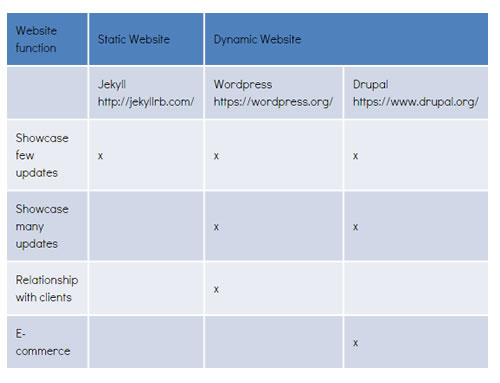
Αν δεν είστε ειδικός αφήστε έναν ειδικό να το κάνει για σας! Αλλιώς μπορείτε να βρείτε λύσεις στο Ίντερνετ, ακόμα και δωρεάν.
Διασφαλίστε ότι η ιστοσελίδα σας είναι προσβάσιμη από ηλεκτρονικό υπολογιστή, τάμπλετ και κινητό τηλέφωνο.
Χρόνος και προσπάθεια που απαιτεί η ιστοσελίδα σας
Σύμφωνα με το σκοπό της ιστοσελίδας σας, είναι απαραίτητο να καθορίσετε ποιος, πως και πότε να αφιερώσετε χρόνο στη διαχείριση της:
- Για μία ιστοσελίδα-βιτρίνα δεν απαιτείται πολύς χρόνος διαχείρισης, γατί, μετά τις πρώτες πληροφορίες που θα βάλετε, χρειάζεται ανανέωση μόνο όταν διαθέτετε νέα προϊόντα ή ειδικές τιμές.
- Μία ιστοσελίδα με σκοπό τη σχέση με τους πελάτες χρειάζεται αυστηρή διαχείριση ώστε να δίνονται άμεσες απαντήσεις σε κάθε πελάτη που θέλει να επικοινωνήσει μαζί σας.
- Το ίδιο συμβάνει και με τις Εμπορικές ιστοσελίδες που εκτός της άμεσης επαφής με τους πελάτες θα πρέπει να ενημερώνεται διαρκώς με λίστες προϊόντων και τιμές.
Αυτή η ενέργεια μπορεί επίσης να καθορίσει την επιτυχία ή αποτυχία της ιστοσελίδας σας.
Πως μπορείτε να ξεχωρίσετε από τους ανταγωνιστές σας Δημιουργήστε κάτι που ξεχωρίζει τα προϊόντα σας από αυτή του ανταγωνισμού.
Τα μοναδικά χαρακτηριστικά πώλησης μπορεί να περιλαμβάνουν:
- ο ενθουσιασμός ώστε να πουλάτε τα προϊόντα σας φυσικά, που είναι και ο καλύτερος τρόπος πώλησης
- η προσφορά ανώτερης υπηρεσίας ή καλύτερου ποιοτικά προϊόντος
- η παροχή περισσότερης πληροφορίας (νέα, απόψεις, συμβουλές, κλπ.)
- η προσφορά καλύτερη αξίας (οργανικό, βιοδυναμικό, χειροποίητο, κλπ.)

Δημιουργώντας ενδιαφέρον περιεχόμενο
Πως μπορείτε να δημιουργήσετε ενδιαφέρον περιεχόμενο;
Το περιεχόμενο και η σημασία του εξαρτάται από τις απαντήσεις που δώσατε στις προηγούμενες ερωτήσεις.
Προσδιορίστε το μήνυμα που θέλετε να επικοινωνήσετε και τις λέξεις-κλειδιά, π.χ. παράδοση, φύση, οικογένεια, σπιτικό...
Για μια ιστοσελίδα απευθείας πώλησης τα πιο κάτω είναι
Θεμελιώδεις πτυχές του περιεχομένου
- Περιγραφή του αγροκτήματος
- Τεχνικές παραγωγής
- Περιγραφή προϊόντος
- Τιμοκατάλογος
- Όροι πώλησης
- Επικοινωνία
- Πως μπορεί κανείς να φτάσει στο αγρόκτημα
Δευτερεύον περιεχόμενο:
- Διασπορά και συλλογή ειδήσεων
- Νέα προϊόντα
- Παραδοσιακές συνταγές
- Φωτογραφίες
- Αξιοπερίεργα
Αντίθετα με ό,τι συμβαίνει σε ένα φυσικό κατάστημα, όταν κάνετε αγορές online δεν μπορείτε να μυρίσετε ή να γευτείτε το προϊόν προς πώληση, π.χ. τυρί. Γι’ αυτό τα προϊόντα σας πρέπει να παρουσιάζονται με σαφήνεια, με εστιασμένο τρόπο και από πολλές πλευρές. Έτσι μπορείτε:
- να προσλάβετε έναν επαγγελματία φωτογράφο, αλλά θα είναι ακριβός
- να δοκιμάσετε με μέλη της οικογενείας σας ή φίλους που βγάζουν καλές φωτογραφίες
- να επενδύσετε σε μια καλή ψηφιακή φωτογραφική μηχανή και λογισμικό επεξεργασίας φωτογραφιών και να τραβήξετε ο ίδιος τις φωτογραφίες
Ανεξάρτητα από το περιεχόμενο, θυμηθείτε ότι πρέπει να είστε σαφείς και σωστοί
Μείνετε ενημερωμένοι!
Η πρόθεση σας να διατηρείτε την ιστοσελίδα σας ενημερωμένη κάθε στιγμή ώστε να προσελκύσετε επαναλαμβανόμενους επισκέπτες
Είναι πραγματικά ουσιώδες για την απευθείας πώληση.
Δώστε στους επισκέπτες σας ένα λόγο να προσθέσουν την ιστοσελίδα σας στις αγαπημένες τους σελίδες, αναρτήστε συνεχώς νέο περιεχόμενο, γράψτε άρθρα για να πείτε στους πελάτες σας νέα για τα προϊόντα και το αγρόκτημα γενικώς.
Πλεονεκτήματα:
- Σας επιτρέπει να προσεγγίσετε ένα πολύ μεγάλο κοινό
- Σας δίνει άμεση διανομή σε εθνικό επίπεδο
- Μπορείτε να εκμεταλλευτείτε τις ευκαιρίες μάρκετινγκ και προώθησης του Amazon σε χαμηλότερες τιμές από το παραδοσιακό μάρκετινγκ και τη διαφήμιση
- Το Amazon μπορεί να διαχειριστεί την παράδοση
Οι προϋποθέσεις για να πουλήσετε τα προϊόντα σας στο Amazon
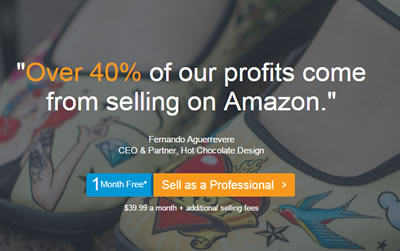
Το παράδειγμα παραγωγού οργανικών σπόρων που πουλάει και στο Amazon

Στατικό: (περιγραφή αγροκτήματος, στόχοι, τοποθεσία, επικοινωνία, κλπ.)
Δυναμικό: (προσφορά προϊόντων, τιμές, εκδηλώσεις, κλπ.)
Χρησιμοποιήστε τα μέσα κοινωνικής δικτύωσης
Συμβουλές για να τα διαχειριστείτε:
Σχεδιάστε την στρατηγική μάρκετινγκ προτού ετοιμάσετε σελίδα για την επιχείρηση σας σε κάποιο κοινωνικό δίκτυο:
- Δοκιμάστε τα διαφορετικά μέσα κοινωνικής δικτύωσης για να καταλάβετε πως δουλεύουν και ξεκινήστε με σελίδα σε ένα μόνο
- Ενοποιήστε το εμπορικό σας σήμα κρατώντας το όνομα του προφίλ και την διεύθυνηση ίδια σε κάθε πλατφόρμα
- Συνδέστε μεταξύ τους όλες τις σελίδες της επιχείρησης σας
- Χρησιμοποιείστε τα διαθέσιμα εργαλεία για να διαχειριστείτε τις σελίδες σας στα μέσα κοινωνικής δικτύωσης
- Το πρόσωπο που θα είναι αρμόδιο για αυτές τις δραστηριότητες (μπορεί να είστε ο ίδιος ή κάποιος άλλος στην επιχείρηση)θα πρέπει να είναι πρόθυμο να διαθέσει χρόνο σε αυτές, κατά προτίμηση σε καθημερινή βάση.
Η ανανέωση της σελίδας στο Facebook πρέπει να γίνεται τουλάχιστον μία με δύο φορές την εβδομάδα.

Οι ειδικοί του Twitter προτείνου να κάνετε το ίδιο δύο με τρεις φορές την ημέρα.

Το Pinterest και το Linkedin είναι τόσο νέα που δεν υπάρχουν ακόμα συστάσεις για την συχνότητα ανανέωσης



ΠΡΟΣΟΧΗ!
Καθώς το Twitter επιτρέπει λογαριασμούς μόνο 15 χαρακτήρων, δεσμεύστε σελίδα πρώτα στο Twitter και οι υπόλοιπες θα δημιουργηθούν εύκολα.
Οδηγός βίντεο για το πως μπορείτε να δημιουργήσετε επαγγελματική σελίδα στο Facebook:

http://blog.seesmic.com/
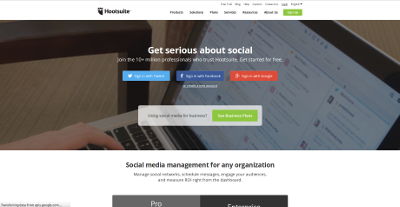
https://hootsuite.com/
Οι καλύτεροι τρόποι για να είστε στο πλευρό των επισκεπτών σας
- Ενημερώστε τον κόσμο για τις «ώρες κοινού» και στο τηλέφωνο. Δείχνει ότι υπάρχει κάποιο φυσικό πρόσωπο που διαχειρίζεται την ιστοσελίδα, κάποιος στον οποίο μπορούν να μιλήσουν. Είναι επίσης καλό για τις πωλήσεις σας γιατί είναι πιθανότερο να πείσετε κάποιον μιλώντας του σε σχέση με την ανάρτηση κειμένων στην ιστοσελίδα.
- Καθησυχάστε τους επισκέπτες σας δίνοντας τους εγγύηση επιστροφής χρημάτων
- Γράψτε τους όρους και τις προϋποθέσεις πώλησης

Π.χ. το αγρόκτημα σας βρίσκεται στην Ιταλία ή τη Σαρδηνία και έχετε πρόβατα, παράγετε τυρί, οπότε μπορείτε να επιλέξετε λέξεις όπως: πρόβατα, βοσκή ή τυρί, αλλά επίσης Ιταλία, Σαρδηνία ή τυρί πεκορίνο. Επίσης είναι δυνατό να επιλέξετε σε ποια τοποθεσία πρέπει να βρίσκονται όσοι πατήσουν τις διαφημίσεις σας για να σας βρουν. Στο προηγούμενο παράδειγμα, η ιστοσελίδα σας θα εμφανίζεται μόνο σε όσους βρίσκονται στη Σαρδηνία και πληκτρολογούν μία από τις λέξεις-κλειδιά.
Αυτές οι δυνατότητες επιλογής είναι ζωτικής σημασίας στην απευθείας πώληση.
Technology provides different ways of purchasing goods online, such as the use of credit or debit cards, online bank transfers, third-party payers.
For mobile users, there are now tools that allow to swipe the credit card directly using their own cellphone.
Κρατήστε στο νου σας
Οι ειδικοί εκτιμούν ότι ο χρόνος που αφιερώνετε μπορεί να είναι από 15 λεπτά την ημέρα έως 5 με 10 ώρες την εβδομάδα, ανάλογα με τον αριθμό των δικτύων που χρησιμοποιείτε.




